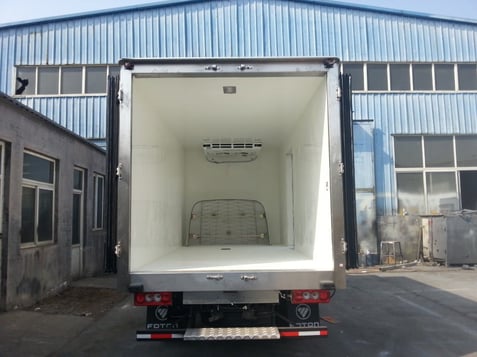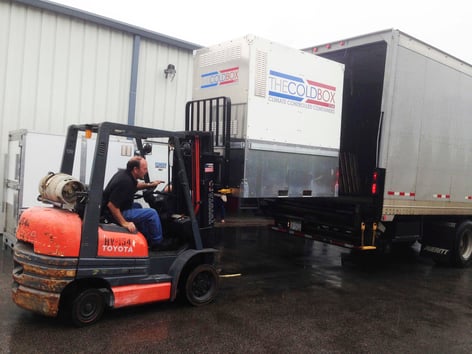REDWOOD LOGIN
Redwood PortalLTL
SCS
SCS Support
Rockfarm
Shipping perishable or temperature-sensitive goods can be a challenge. You need to balance freshness, timing, and cost to ensure your freight is delivered on time to the consumer. This is true for cold freight as well as other types of goods that require temperature and environmental controls. So how do you guarantee the best-controlled shipment?
There are two types of shipping options for temperature-controlled transport: reefers and fridge boxes. Below we’ll go through both forms, their advantages and disadvantages, and how you can use them for your business.
If you want to also learn about the differences between dry and reefer shipping, click the link here.
“Reefer” is the term given to refrigerated trucks with temperature control equipment. These trucks are able to maintain a specific temp range to protect freight from perishing or being exposed to external environmental factors.

Reefers can fit large quantities of goods that are within the same temperature range. This means that an entire truck can be filled with a variety of products, as long as they can be held in the same temperature range. For example, frozen fish, meats, and veggies could all be transported in a reefer with -10 to 0 degrees Fahrenheit.
Reefers are best for shipping large quantities of similar goods. As we’ll discuss further, you would need multiple fridge boxes to ship larger volumes, while a reefer can fit a higher number of the same or similar products.
Reefers are low in supply and high in demand. This means that they can be rare to come by. Furthermore, they can be challenging to schedule because perishable goods require set timelines. Moreover, LTL reefers are hard to organize because single LTL truckload needs to be filled with products that are in the same temperature range, on the same schedule, going to the same location.
Together, this can create a scheduling calamity for reefers. Oftentimes, LTL reefers will operate on a set schedule, offering few pickup up and drop off days for clients.
A fridge box is a temperature-controlled box that can hold 1-2 pallets of product. These boxes can be loaded on to a dry trailer and still maintain temperature protection for sensitive freight. These have tight controls and are usually able to maintain a temperature within 1 degree for up to 5 days.

Fridge boxes are easier to maintain a specific temperature than reefers. This precise control of freight has been shown to reduce losses significantly. In this way, fridge boxes are often used for the transport of pharmaceuticals and medicines.
Fridge boxes also help to overcome scheduling constraints. Because fridge boxes are portable, they can be loaded on a dry truck or van and condensed with dissimilar types of shipment. This means LTL transport companies don’t need to worry about filling their truck with goods that are all of the same temperature range. It also means that loading and unloading can be faster since dry shipment loading allows for a “drop and hook” load system.
Thus, fridge boxes tend to be less expensive than reefers because they don’t require fully equipped trucks. This helps alleviate the concerns of the supply and demand of traditional reefers.
Both reefers and fridge boxes can offer real-time tracking and data monitoring. This allows customers and LTL facilitators to ensure temperature control, GPS location, and an estimated schedule with arrival time.
Fridge boxes can usually only hold 1 to 2 pallets of goods per box. This means that they’re best for smaller quantities of temperature-controlled goods per shipment. While fridge boxes are usually more economical, they can also be pricier in some cases since they take up a large portion of dry trailer space.
There’s no definitive answer whether reefer or fridge box is better. The efficiency and price of your temperature-controlled freight will depend on the shipment’s size, contents, and schedule. LTX offers both reefers and fridge boxes to our clients, so you can always have control over your goods’ temperature, transport, tracking, and expenses.
To find out what will work best for your temperature-controlled freight, request a free consultation with LTX. We’ll ensure that your sensitive goods make it to the final destination safely and economically.